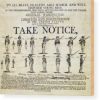 Boffins at Rice University said they have discovered how to effectively use the unused UHF TV spectrum, creating streams of data over wireless hotspots that could operate for miles.
Boffins at Rice University said they have discovered how to effectively use the unused UHF TV spectrum, creating streams of data over wireless hotspots that could operate for miles.
Edward Knightly, professor at the Rice department of electrical and computer engineering, said: “The holy grail of wireless communications is to go both fast and far. Usually you can have or the other but not both. Wireless local area networks today can serve data very fast, but one brick wall and they’re done. UHF can travel far, but it hasn’t had the high capacity of wi-fi.”
The researchers will show a multiuser and multiantenna transmission scheme for UHF at a conference in Hawaii today.
The UHF spectrum became available after the move to digital TV. UHF signals travel for miles and would be useful to provide broadband capabilities for remote communities.
Lead researcher Narendra Anand said: “When comparing UHF and wi-fi, there’s usually a tradeoff of capacity for range or vice versa. Imagine that the wi-fi access point in your home or office sends data down a 100-lane highway, but’s only one mile long. For UHF, the highway is 100 miles long but only three or four lanes wide, and you cannot add any lanes.”
He said that efficiently using the lanes of UHF involves a multiantenna transmission technique that allows access by many people using the same channel simultaneously.
Pictured here from left to right are researchers Edward Knightly, Narendra Anand and Ryan Guerra.





